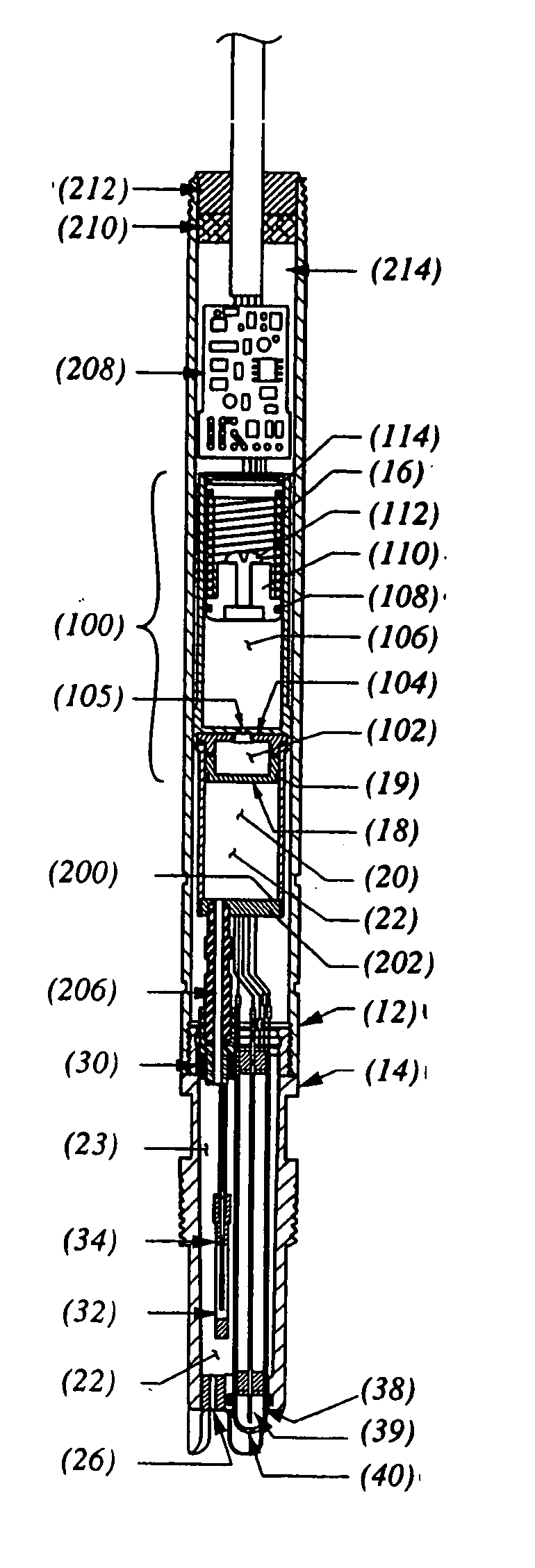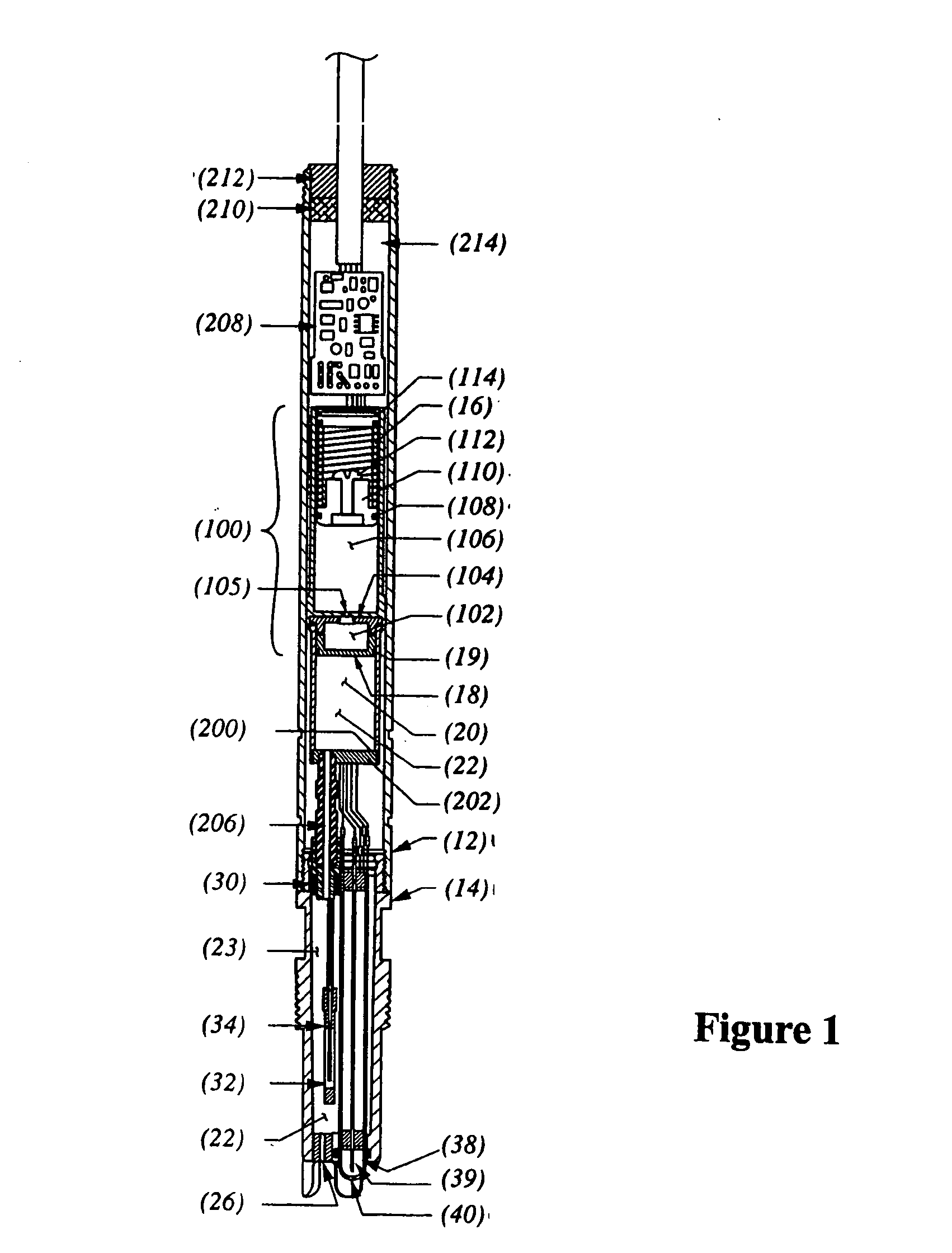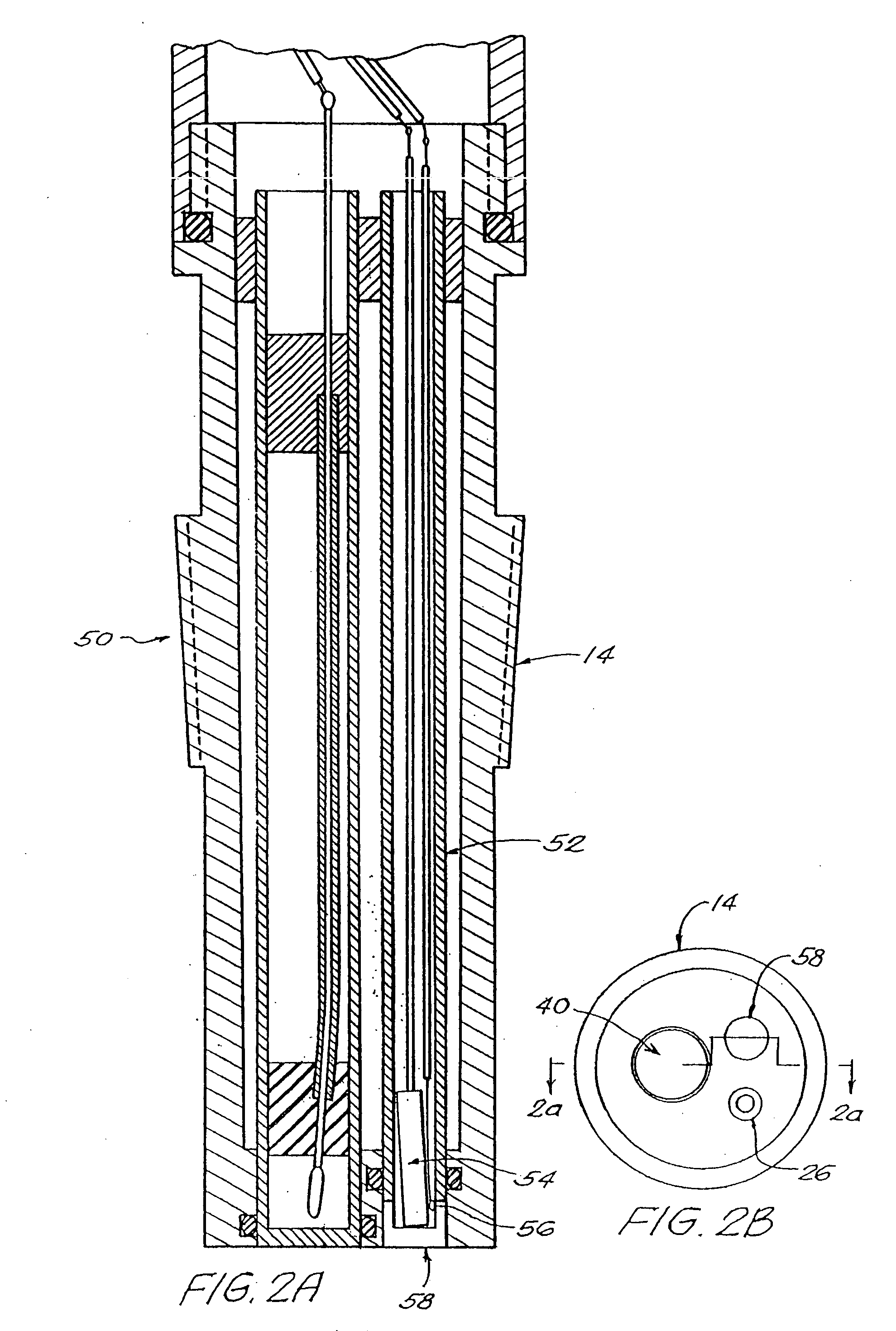Use of an osmotic pump to create a flowing reference junction for ionic-activity sensors
a reference junction and ionic-activity sensor technology, applied in the field of ionic-activity sensors, can solve the problems of compromising the liquid junction and the half-cell potential, poor results obtained from ion-selective electrode measurements, etc., and achieves the effect of increasing the volume of osmotic-agent solution, relatively small and long-lasting, and initial ra
- Summary
- Abstract
- Description
- Claims
- Application Information
AI Technical Summary
Benefits of technology
Problems solved by technology
Method used
Image
Examples
Embodiment Construction
[0020] The invention is applicable to devices that include a reference electrode for use with electrochemical ion measuring electrodes, for example, pH electrodes, and employ a flowing reference-cell electrolyte.
[0021]FIG. 1 depicts one such device. The FIG. 1 device, which is a pH sensor, includes an upper housing 12 and a lower housing 14. Located in the upper housing 12 is a delivery-fluid reservoir 20 for an electrolyte 22. As will be explained in due course, this electrolyte flows past a reference half cell 34. In the illustrated embodiment, the reference half cell 34's electrode is encased by an internal junction 32, which may be a cation-exchange membrane. The cation-exchange membrane may be a sulphonated polytetrafluoroethylene membrane, for example, commercially available membrane from DuPont under the trade name NAFION®. A glass membrane 40 surrounds the sensor's measuring electrode 39. A pre-amplifier board 208 receives the reference and measuring electrodes' outputs and...
PUM
 Login to View More
Login to View More Abstract
Description
Claims
Application Information
 Login to View More
Login to View More - R&D
- Intellectual Property
- Life Sciences
- Materials
- Tech Scout
- Unparalleled Data Quality
- Higher Quality Content
- 60% Fewer Hallucinations
Browse by: Latest US Patents, China's latest patents, Technical Efficacy Thesaurus, Application Domain, Technology Topic, Popular Technical Reports.
© 2025 PatSnap. All rights reserved.Legal|Privacy policy|Modern Slavery Act Transparency Statement|Sitemap|About US| Contact US: help@patsnap.com



